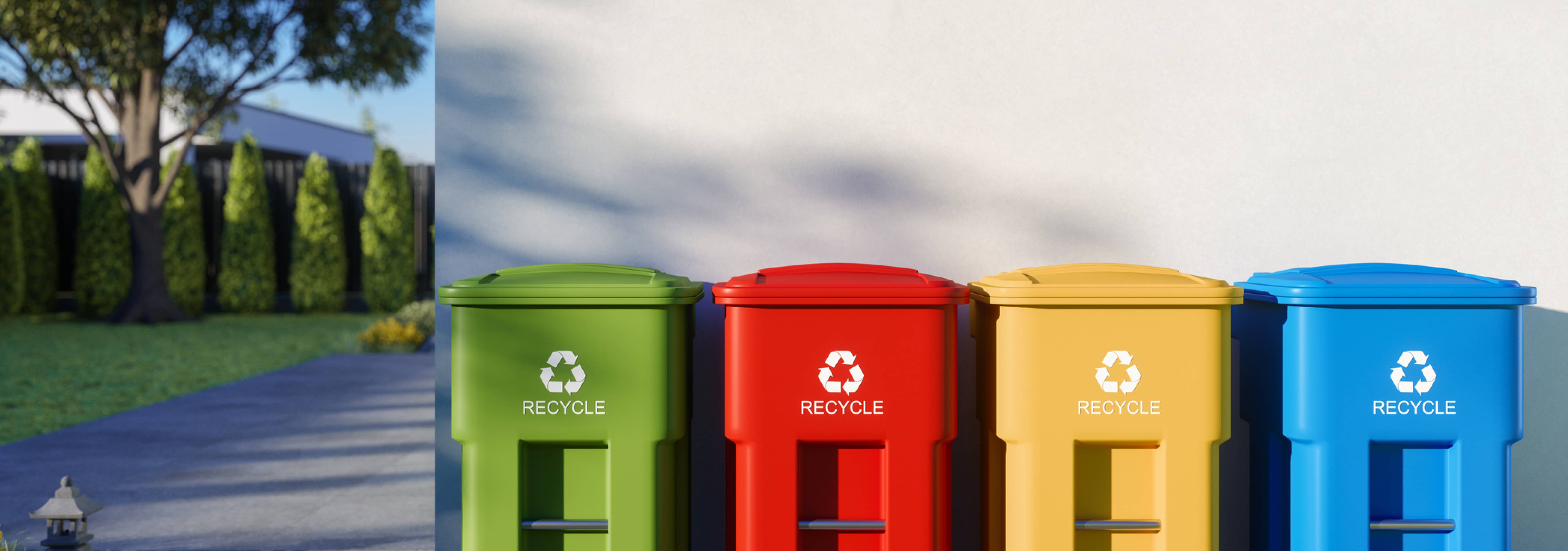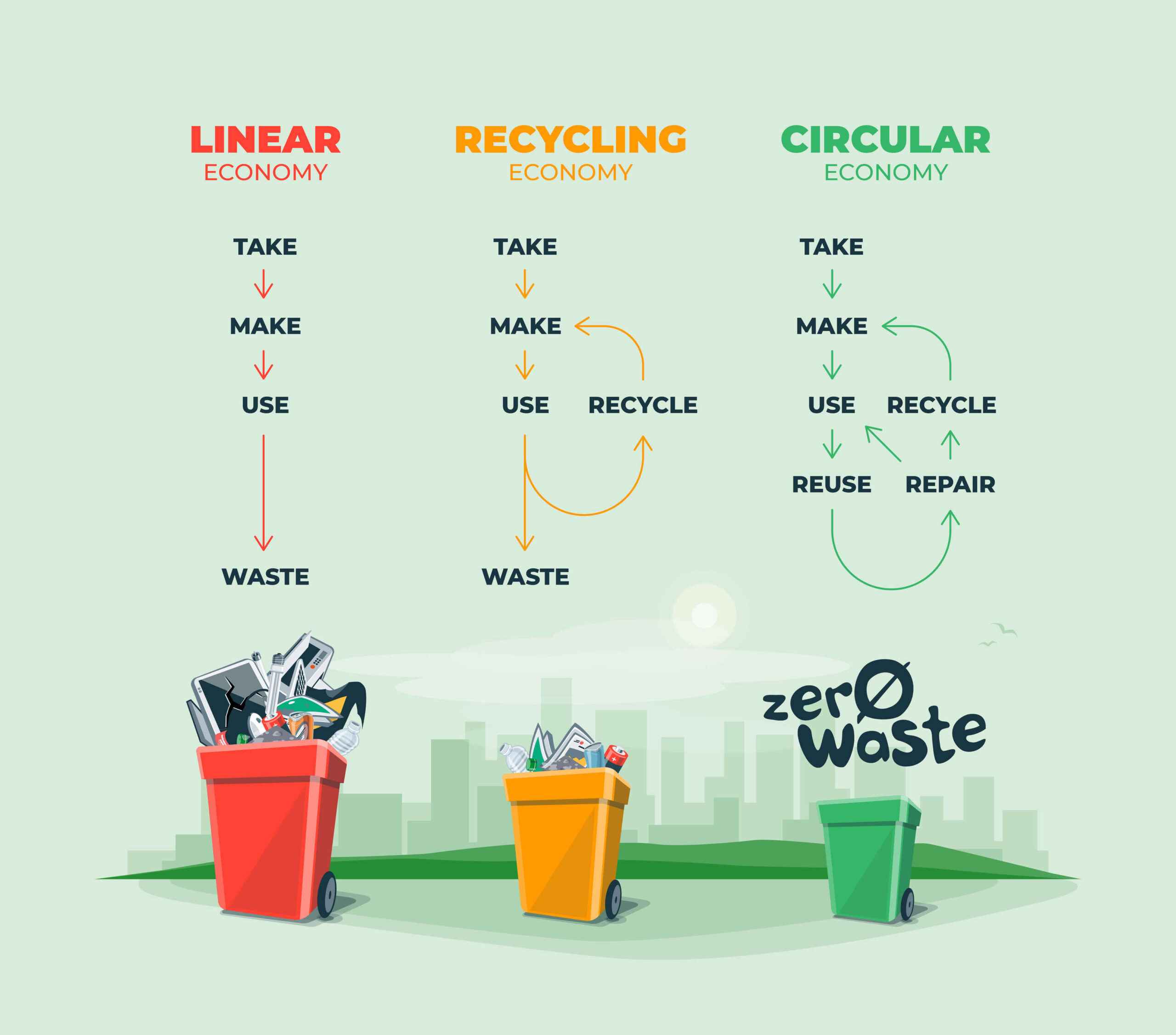Recycling Lives Services: Transforming Waste into Valuable Resources
Recycling Lives Services: Transforming Waste into Valuable Resources
Blog Article
Exploring Various Types of Waste in Modern Waste Monitoring Systems
The modern landscape of waste monitoring involves navigating a complicated selection of waste types, each needing specialized handling and disposal techniques to minimize ecological impacts. Local strong waste, dangerous waste, electronic waste, and organic waste each present distinctive challenges and chances for source recuperation. Ingenious services such as wise waste bins and waste-to-energy modern technologies are becoming crucial devices in boosting performance and sustainability. Understanding these waste types is necessary for fostering public understanding and encouraging energetic involvement in sustainable practices. What techniques can efficiently address these varied sorts of waste while advertising a round economic climate?
Community Strong Waste
Municipal strong waste, typically referred to as house trash or trash, encompasses a selection of disposed of products produced by residential, business, and institutional sources within a district. This waste stream normally includes things such as packaging, food scraps, backyard trimmings, paper, plastics, textiles, and thrown out household items. The management of metropolitan solid waste is a critical part of urban preparation and public health and wellness, requiring reliable collection, transport, and disposal systems.
Reliable waste administration systems are created to minimize ecological influence while making the most of source recovery. This usually involves a mix of approaches including recycling, composting, and landfilling. Reusing programs target products like paper, glass, steels, and certain plastics, diverting them from garbage dumps and reestablishing them right into the production cycle. Composting organic waste, such as food scraps and lawn trimmings, not just minimizes landfill usage however additionally produces valuable soil changes.
Towns need to likewise attend to the logistical and financial difficulties related to waste monitoring. Applying pay-as-you-throw systems, boosting public understanding, and buying innovation can substantially boost waste diversion prices. By integrating these methods, towns can foster sustainable areas, lower greenhouse gas exhausts, and save natural deposits.
Contaminated Materials
Reliable dangerous waste management entails numerous crucial steps: identification, disposal, segregation, and therapy. Segregation makes certain that unsafe materials are saved independently from non-hazardous waste to avoid cross-contamination.
Regulative frameworks, such as the Source Preservation and Healing Act (RCRA) in the USA, give standards and requirements for contaminated materials management. Adherence to these guidelines, combined with improvements in waste treatment modern technologies, is important in reducing the threats linked with hazardous waste.
Electronic Waste
Electronic waste, typically described as e-waste, represents a rapidly growing obstacle in waste monitoring systems globally. This sort of waste encompasses discarded electronic tools and equipment such as mobile phones, computers, televisions, and various other digital appliances. The rapid pace of technological improvement, coupled with decreasing item lifespans and consumer need for the current tools, has significantly enhanced the volume of e-waste produced every year.
E-waste is specifically problematic because of its intricate make-up, commonly including hazardous materials like lead, cadmium, and mercury, which pose substantial ecological and health and wellness risks if not correctly check that taken care of. Conversely, e-waste additionally includes beneficial products such as copper, gold, and silver, which can be recuperated and reused. The double nature of e-waste-- both dangerous and valuable-- demands specialized handling, recycling, and disposal processes.
Efficient e-waste administration includes rigid regulatory structures, durable collection systems, and progressed reusing modern technologies. Public recognition and engagement are essential, as improper disposal practices, such as illegal discarding and informal recycling, worsen ecological contamination and health and wellness dangers. Subsequently, boosting e-waste administration methods is crucial for alleviating environmental effect and recuperating important resources in an increasingly digital world.

Organic Waste
Organic waste, comprising cooking area scraps, yard trimmings, and farming residues, stands for a significant section of the global waste stream. This kind of waste is biodegradable, suggesting it can be broken down by bacteria right into simpler natural compounds. Regardless of its potential for all-natural decomposition, incorrect monitoring of organic waste can cause adverse environmental influences, including the discharge of greenhouse gases such site link as methane, which add to climate modification.
Reliable management of natural waste is vital for lessening these environmental impacts (recycling lives services). Composting is a commonly embraced technique, changing natural waste into nutrient-rich compost that can improve dirt health and agricultural efficiency. Furthermore, anaerobic food digestion is an arising technology that converts organic waste into biogas, a sustainable power resource, and digestate, which can be made use of as plant food
Municipalities and waste management entities must execute robust organic waste collection and treatment programs to take full advantage of the advantages of these procedures. Public education and learning projects can additionally play a pivotal role in encouraging homes and services to different natural waste from other sorts of waste. By focusing on the administration of natural waste, societies can decrease garbage dump use, lower greenhouse gas discharges, and produce important byproducts for agricultural use.

Cutting-edge Waste Administration
In the realm of waste management, innovative methodologies are changing just how societies handle their refuse, intending for sustainability and effectiveness. One popular development is the implementation of clever waste containers geared up with sensors that check fill degrees and optimize collection courses.
One more noteworthy growth is the fostering of waste-to-energy (WtE) technologies. By transforming non-recyclable waste into usable power through procedures such as incineration and anaerobic digestion, WtE reduces land fill concern and provides a renewable resource resource. Moreover, developments in chemical reusing enable for the breakdown of complicated plastics into their initial monomers, enabling the development of new, high-grade plastic products.
Additionally, the circular economic climate model is getting grip, emphasizing the style of items and systems that prioritize reusability and resource performance. This holistic technique urges industries to lessen waste generation from the start. Through these ingenious approaches, modern waste administration systems are not just addressing the instant obstacles of waste disposal however additionally leading the way for a much more sustainable future.
Final Thought
A thorough understanding of metropolitan strong waste, contaminated materials, digital waste, and natural waste, coupled with the implementation of ingenious waste administration options, is critical for reducing home ecological effects. Incorporating modern technologies such as clever waste bins and waste-to-energy systems can enhance efficiency and sustainability. Effective waste management techniques not only foster resource healing however likewise promote public understanding and involvement, eventually contributing to the growth of a round economic situation.
The modern landscape of waste administration includes navigating a complex range of waste types, each requiring specialized handling and disposal methods to minimize ecological effects. Local solid waste, dangerous waste, electronic waste, and natural waste each existing unique challenges and chances for resource recovery.Digital waste, frequently referred to as e-waste, stands for a quickly growing obstacle in waste administration systems worldwide. Through these cutting-edge approaches, contemporary waste management systems are not just resolving the instant challenges of waste disposal yet likewise paving the means for a much more sustainable future.
A thorough understanding of local solid waste, unsafe waste, electronic waste, and natural waste, combined with the implementation of cutting-edge waste administration solutions, is imperative for minimizing environmental influences. (recycling lives services)
Report this page